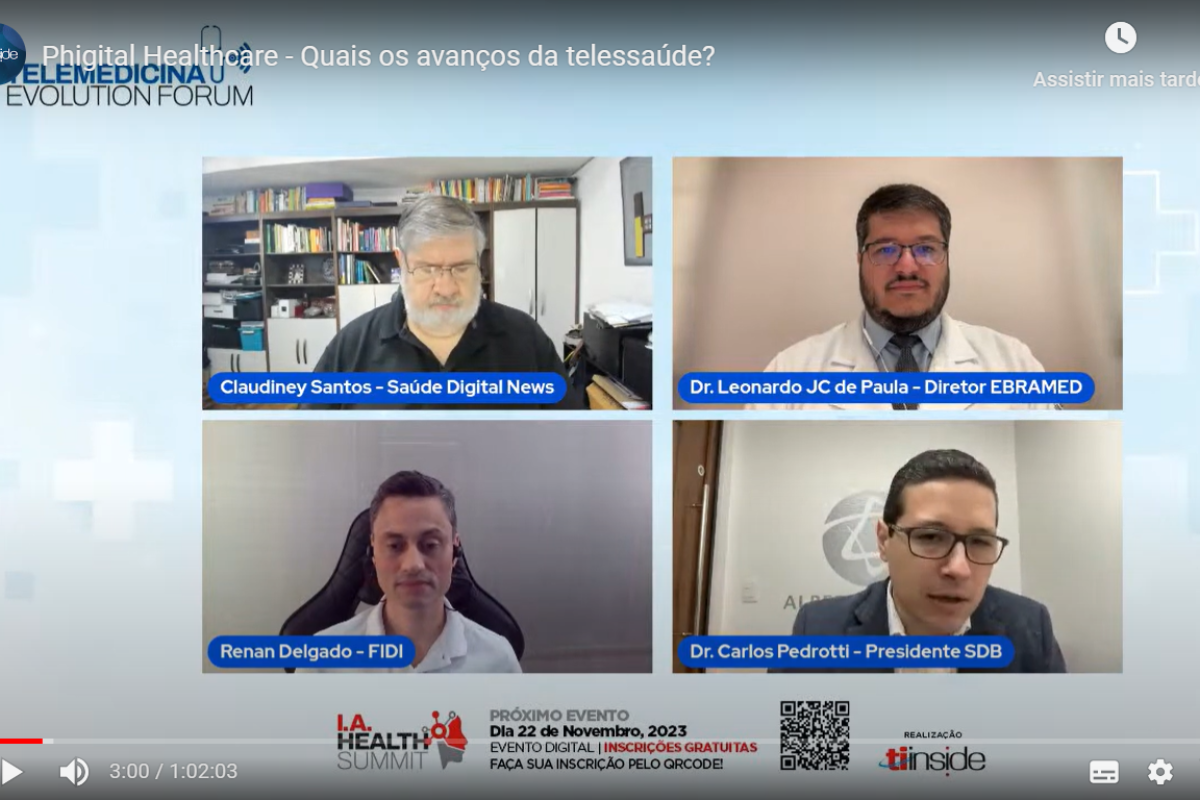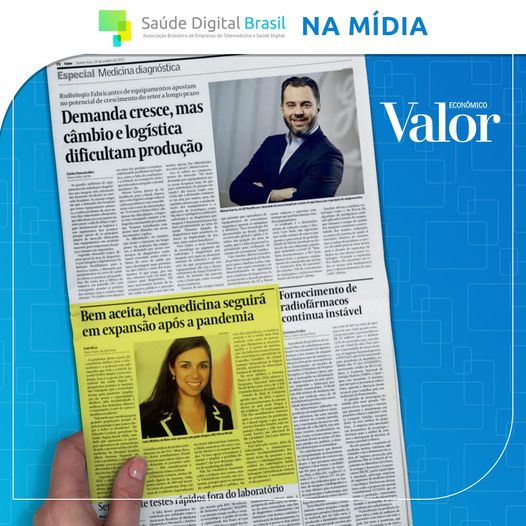The panel, which included the participation of Carlos Pedrotti, president of SDB, addressed aspects of this improvement, such as the interaction between doctors and patients, a more fluid experience in care, the ability to make care more accessible to the entire population and to save resources.
Telemedicine has been evolving since the beginning of the century, but it was with the pandemic that it began to gain greater repercussion and adherence by patients. In the beginning, we saw a disorganized practice, without a legal basis and that still aroused insecurity among professionals and patients. The approval of Law 14,510/22, which authorizes and conceptualizes the practice of telehealth throughout the national territory, which occurred at the end of last year, it was a major transformative milestone. Today, telehealth is part of the routine of thousands of people and there is a consensus that it is possible to interact with professionals from different specialties using technology. In addition, it has become essential to ensure the sustainability of the health system as a whole, including supplementary health.
But what are the prospects from now on? What can we expect from the future? This central question was addressed in the panel “Phygital Healthcare – What are the advances in telehealth?”, during the 1st edition of the Telemedicine Evolution Forum, which took place on September 12th and was broadcast on YouTube. Carlos Pedrotti, president of Saúde Digital, participated in the discussion, which was also attended by Leonardo Jorge Cordeiro de Paula, technical and academic director of the Brazilian School of Medicine (Ebramed), and Renan Delgado, IT manager at FIDI.
Regarding the paths that are being designed for the future, Pedrotti explained that telemedicine was born with the idea of replacing physical and emergency units for low-complexity cases and meeting the demand for care in this setting. This not only speeds up diagnosis, but also facilitates access, anticipates resolution, reduces costs and allows for the care of highly complex demands. The pandemic increased demand and highlighted the importance of expanding telehealth services, covering other specialties and primary care, thus contributing to an overall improvement in the functioning of the system.
The executive argued that the consolidation of phygital, which is already happening in other areas, including healthcare, is inevitable. Technological evolution is happening, providing better healthcare, with access and adequate cost, and there is no doubt that phygital healthcare will prevail. bringing new perspectives and increasingly opening up space for innovations. However, the transition of care between in-person and telemedicine care needs to be more fluid, through both interoperability mechanisms and more complete integration between systems, going beyond information.
“The future lies in uniting the physical with the digital. This means a patient who visits the physical unit and then goes to the digital one for a follow-up. Or they start in the digital one in the ER and are referred for in-person care or exams, and often return to the digital one again. But we need to integrate all of this and the patient must have the impression that it is the same system and the same journey, and not a transition of journeys,” he explains.
This model is currently being tested and opportunities can already be identified. However, adjustments to the integration mechanisms are still necessary, both to ensure scalability and to allow this transition to occur between institutions and different locations.
To contextualize this current telehealth scenario and its advances in Brazil, other topics were addressed. Reremuneration of professionals working in telehealth and the importance of this model for the health sector were among them, as well as the importance of clear guidelines and service protocols to ensure safety in the exercise of the various types of telehealth and to establish limits. Pedrotti highlighted the Manual of Good Practices for Digital Health Brazil, which is available for free download, as a work with great potential to guide the work of professionals working in telemedicine or telehealth.
Furthermore, education was identified as a central pillar to improve and expand the provision of telehealth services. This includes training healthcare professionals to make good use of technology and sharing knowledge among teams.
Another point highlighted during the discussion was the preservation of patient autonomy, which should also be a point observed by health insurance companies. “The practice of telehealth is essential, but it cannot completely replace physical care. There must be a responsible balance and, above all, a concern for the autonomy of the patient, who cannot be forced to use it”, emphasizes the president of SDB.





